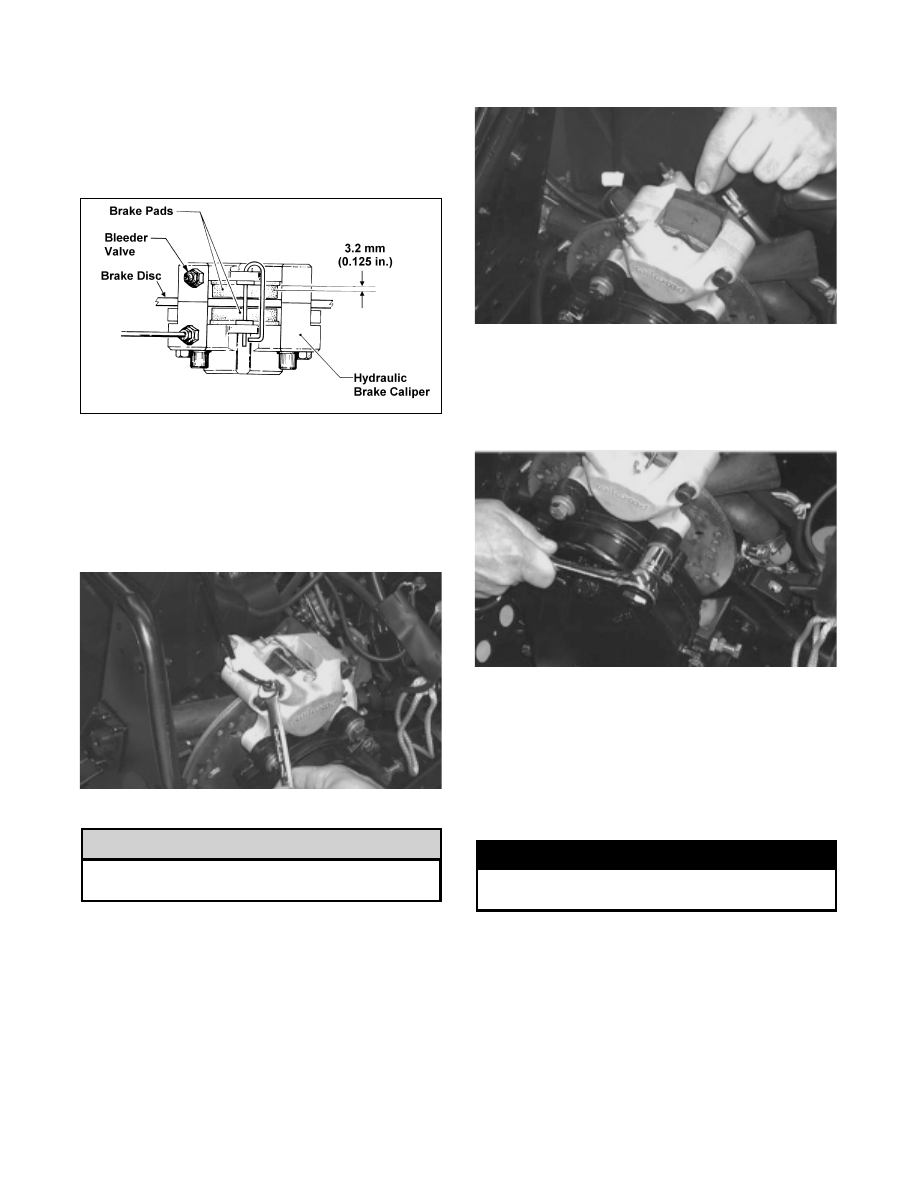Snowmobile Arctic Cat (2000 year). Manual - part 110

REMOVING CALIPER
1. Slide a piece of flexible tubing over the ball of the
bleeder valve and direct the other end into a
container.
Fig. 8-167
0730-434
2. Open the bleeder valve and compress the brake
lever several times to drain the reservoir of fluid.
3. Remove the brake hose from the caliper. Use an
absorbent towel to collect any remaining brake
fluid.
Fig. 8-168
AF262D
Brake fluid is highly corrosive. Do not spill brake
fluid on any surface of the snowmobile.
4. Remove the retaining pin securing the brake pads to
the caliper assembly; then remove the brake pads.
Fig. 8-169
AF255D
5. Loosen the upper socket-head cap screws securing
the caliper halves; then remove the two cap screws
and lock washers securing the brake caliper to the
chain case. Account for two spacer washers.
Fig. 8-170
AF261D
6. Remove the caliper assembly from the engine
compartment.
DISASSEMBLING
1. Position a piece of wood between the pistons. Using
low-pressure compressed air, blow into the caliper
brake hose fitting to remove the brake pistons.
! WARNING
Always wear safety glasses when using
compressed air.
! CAUTION
8-46